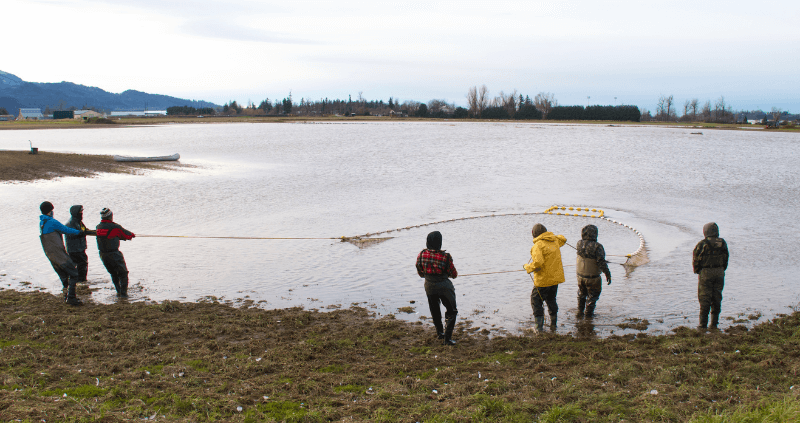When Disaster Strikes, PSF steps up
November 17 marks the one-year anniversary of the 2021 catastrophic floods in B.C. after a series of atmospheric rivers resulted in a state of emergency across the province. The flooding left Pacific salmon stranded in agricultural fields and vital spawning habitat in need of immediate repair.
Timely work was essential to help salmon and their habitats directly impacted by the floods. Already struggling salmon populations — some Chinook and coho have dropped by 90 per cent — suddenly faced life-threatening extremes. The Pacific Salmon Foundation (PSF) immediately called on partners to coordinate and fund urgent salmon recovery efforts.
Many projects were completed in the weeks after the flood to help save stranded salmon and re-connect channels for spawning fish. A year later, work is still underway to recover vital habitat that was blocked, washed away, or impacted by the floods.
Here’s a snapshot of some of the progress PSF has made with partners to support salmon recovery efforts directly related to the 2021 floods.
Immediate Response
In immediate response to the flooding, the first priorities were saving stranded salmon and preventing imminent death. This included ensuring salmon had the necessary water to return to streams once levels receded. In addition, preventing new pollution from entering the water was a top priority.
Collaborating with the Lower Fraser Fisheries Alliance (LFFA), Semá:th Nation, Fisheries and Oceans Canada (DFO), and environmental non-government organizations, PSF rapidly catalyzed the necessary groups and funded emergency projects ranging from urgent habitat restoration to fish rescue from flooded fields along the Sumas River.
Second, after saving salmon from immediate threats, PSF worked with partners to identify and repair high-value habitat areas that were at risk of further damage. The initial clearing of debris and blockages was essential to maintain water flows and access to habitats.
PSF provided more than $300,000 to urgent flood-recovery efforts including the restoration of the Eaton Beaton side channel in the Coldwater River and fish rescue along the Sumas.
Time-sensitive, emergency projects:
The Fraser River and its tributaries — areas severely affected by the November 2021 floods — comprise some of the most valuable salmon habitat in the world. PSF supported several projects aimed at protecting valuable at-risk habitat capable of supporting several million juvenile salmon.
A few projects include:
Anderson Pond—Chilliwack, B.C.
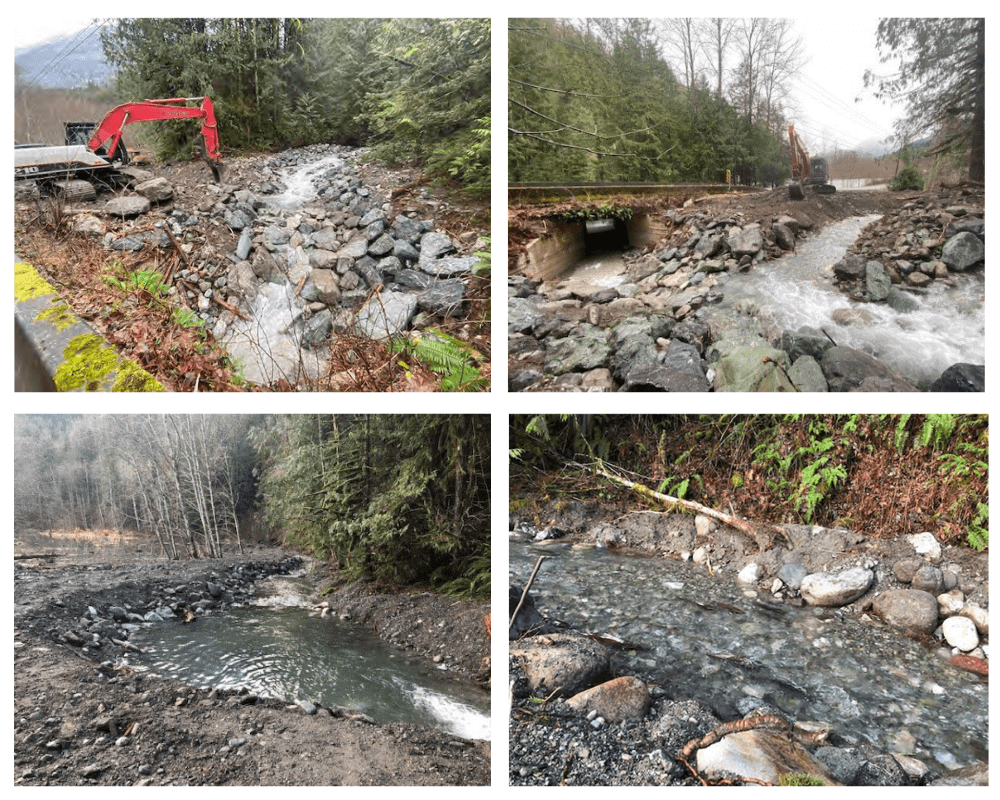
From left, clockwise, debris blocks Anderson Pond channel, blockage cleared, salmon spawn in the repaired channel.
Anderson Pond channel in Chilliwack was completely buried with sediment. PSF supported the reconstruction on Dec. 10, 2021. The next day, 40 adult coho were seen spawning in the repaired channel.
Maria Slough–Kent, B.C.
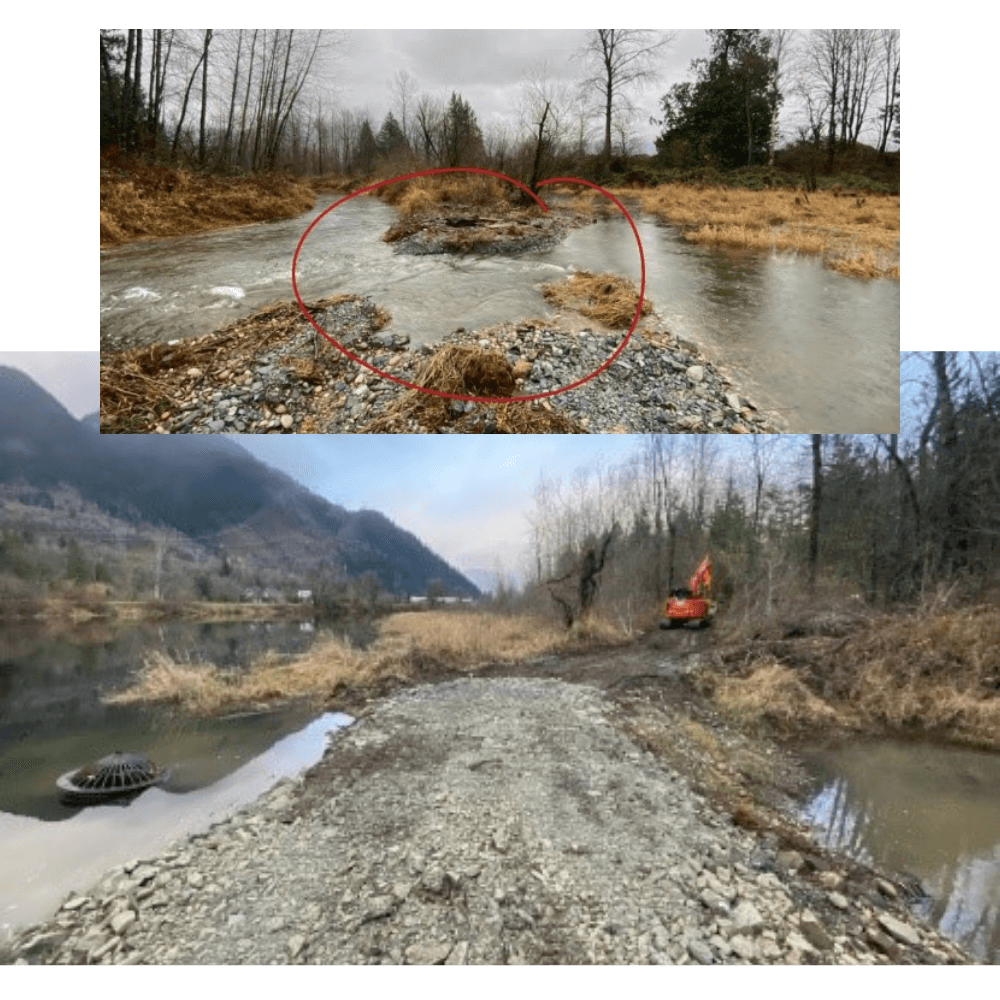
Above: examples of a broken and fixed berm along Maria Slough.
Maria Slough is home to a COSEWIC-listed endangered Chinook population. The Seymour Channel provides about 900 square meters of spawning habitat for these Chinook, and two more similar sized spawning channels are located downstream. During flooding a berm washed out diverting flows away from these Chinook spawning locations. Through a collaborative effort, the berm was repaired and full flow was restored to the Seymour channel successfully mitigating the risk to salmon eggs.
Pearce Pond—Chilliwack, B.C.
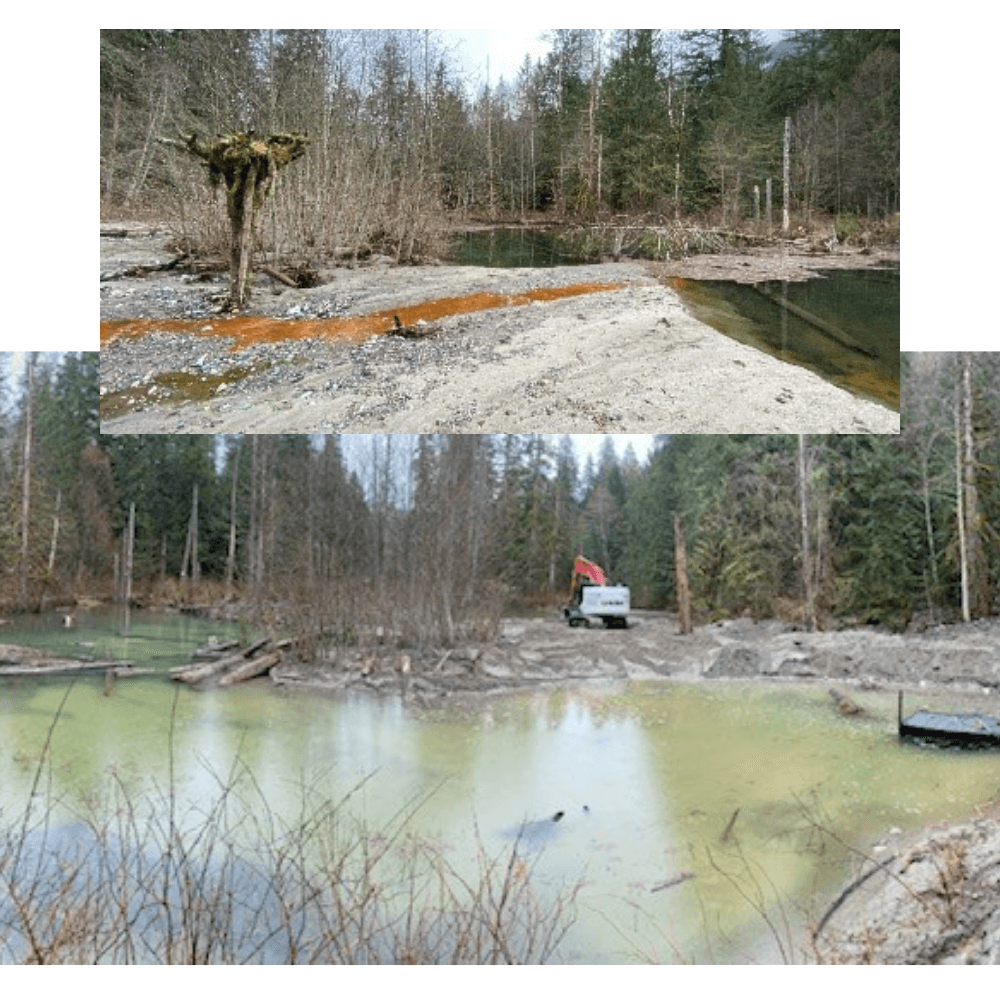
Above: Sediment and debris block Pearce Pond intake following landslide. Below: Upper pond cleared and repaired.
The Pearce Ponds project consists of a network of spawning channels and four large rearing pools fed by Pearce Creek. The area provides 1000 square meters of spawning habitat and 44,000 square meters of rearing habitat for coho salmon and steelhead. The system is capable of producing 22,000 coho smolts annually. A significant landslide in the Pearce Creek ravine buried the upper pond and prevented water from flowing through the outlet. The channel was cleared, rebuilt and other repairs were made, restoring normal flow and re-establishing access for fish. It is expected that coho fry will have survived the flood, and by quickly repairing and reconnecting this habitat, the salmon survival in this stretch of river will be close to normal.
Community Salmon Program and Community Funding
In the initial aftermath, PSF opened an emergency round of funding from its Community Salmon Program to help grass-roots conservation organizations address immediate problems.
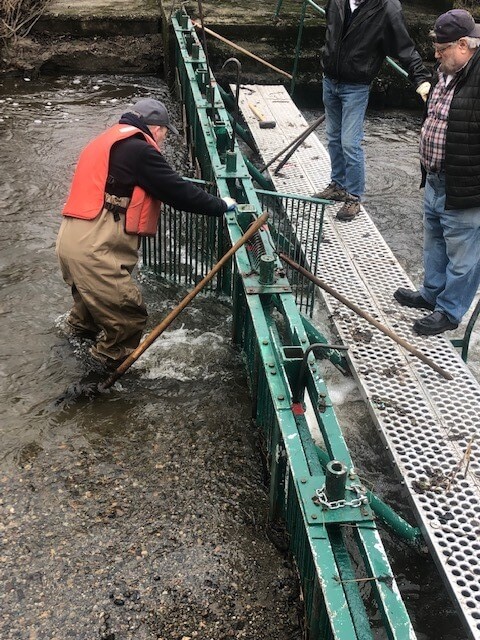
Above: The Semiahmoo Fish and Game Club repairs fish fence thanks to emergency funds provided by PSF’s Community Salmon Program.
For example, the Little Campbell Hatchery operated by the Semiahmoo Fish and Game Club received $2,000 from PSF’s Community Salmon Program to replace damaged equipment to maintain its incubation room and repair a fish fence.
In the aftermath of the storm, local business Pacific Angler wanted to help and made a timely, generous donation of $6,000 along with Groupe Ocean’s $5,000 donation to PSF’s Climate Emergency fund. PSF was able to collate their gift with others to support recovery efforts.
Rebuilding: A coordinated effort with “salmon first” priority
As the province took immediate measures to rebuild the dykes, roads, pipelines, and railways damaged during the floods, the opportunity to put salmon first surfaced.
“Infrastructure being rebuilt presents the quintessential opportunity to integrate flood recovery efforts and reconstruction planning with salmon conservation. There is a finite window of time that will see post-flood rebuilding efforts either contribute positively to improving conditions for salmon or permanently harm their future,” says PSF VP Salmon Jason Hwang. “The urgent and important challenge is timely coordination across entities — First Nations, federal, provincial, and local government — for the conservation of wild Pacific salmon.”
“When planning after the immediate response, we need to build back ‘salmon smart,’ and recognize that flooding is natural, but climate change has made it more extreme,” says Hwang. “Ideally, decisions should recognize that these floods are likely to occur again. We need to develop land-use policy that is compatible with occasional flooding and prioritize infrastructure that is salmon friendly.”
Game-changing projects completed and underway
As the floods receded, evaluations and assessments commenced. Two working groups — one from the Interior and one from the Lower Fraser River — formed in these high-priority salmon regions to review populations and habitat impacts.
PSF has been working closely with the groups to fund assessments, prioritize responses, and provide repair costs for important sites.
Thanks to support from the Pacific Salmon Endowment Fund, PSF was able to catalyze efforts by coordinating leaders and experts from First Nations, government, NGOs, consultants, and volunteers, and fund game-changing projects in high-priority areas.
“The funding enables PSF to be a real catalyst in convening partners to support salmon recovery. The assessments have been critical in uncovering issues and time-sensitive solutions,” says Hwang.
Many projects have been completed, and assessments are underway for others that may begin in the near future.
Interior
For example, in the Nicola-Coldwater River, the Nicola Emergency Fish Group comprising First Nations, DFO, BC Ministries, PSF, and others came together cooperatively to assess how to allow salmon passage through a major log-jam that’s blocking coho from upstream spawning habitat. This project is under assessment to help find a solution.
Coldwater-Nicola River—Merritt, B.C.
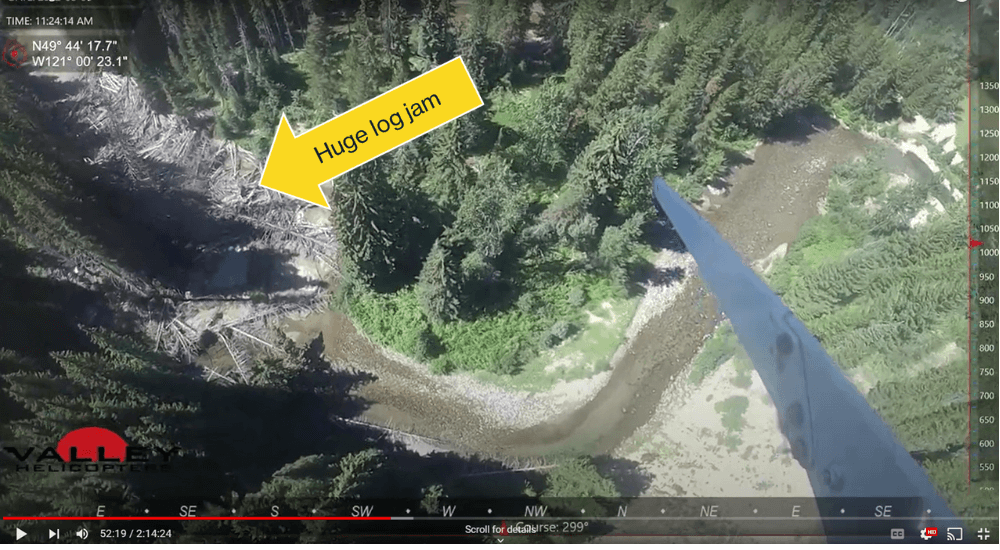
Above: Arial view of Coldwater-Nicola River. Damage assessments continue.
Lower Fraser River
Semá:th X̱ó:tsa (Sumas Lake) — Abbotsford, BC
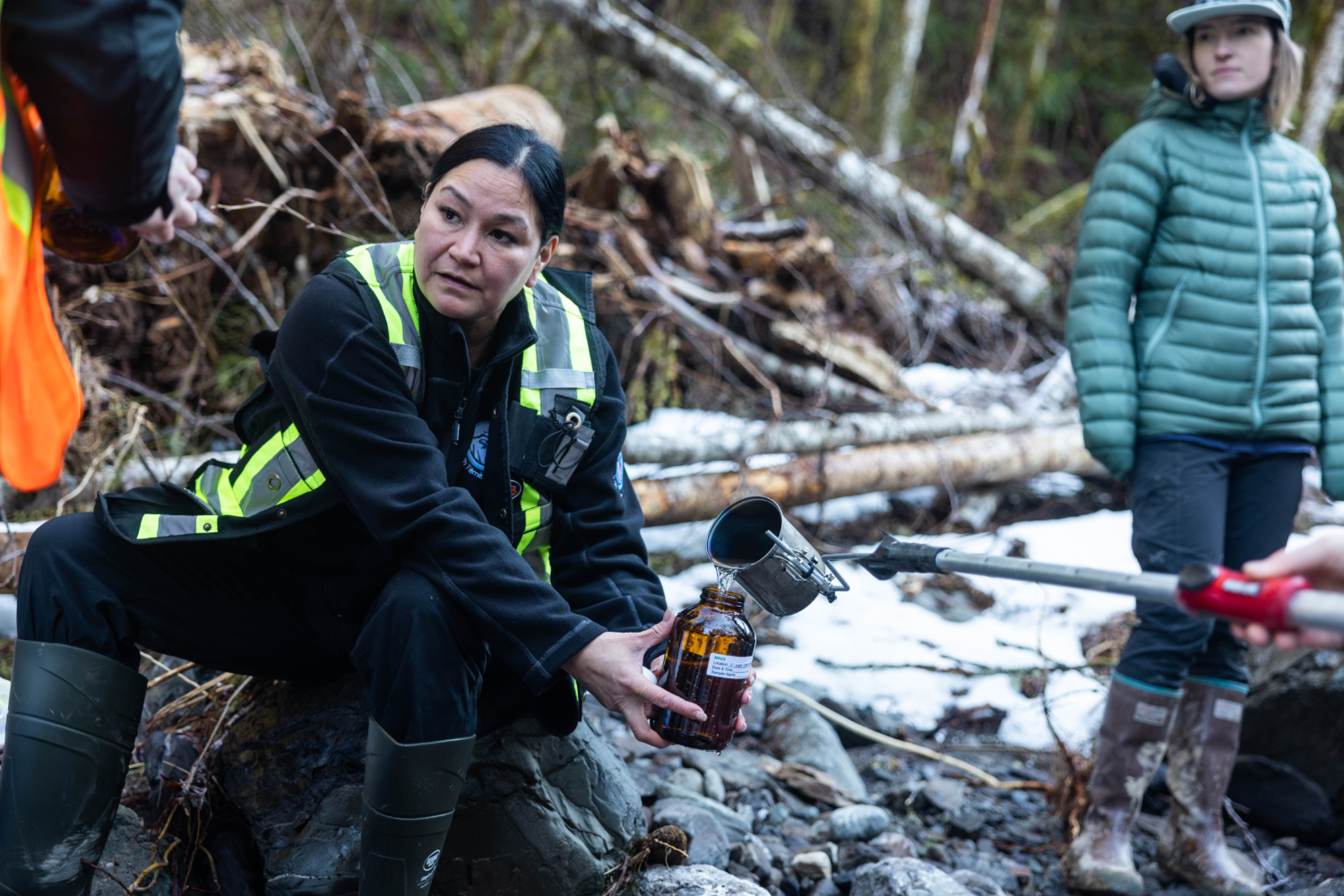
PSF provided funding to support Raincoast Conservation Foundation’s study of post-flood water contaminants. Along with partners, Raincoast took 29 surface water samples in the former Semá:th X̱ó:tsa (Sumas Lake) area over a seven-week period. A report, released November 17, details widespread contamination of the waters of the Lower Fraser Valley including excess nutrients, metals, fecal coliform, pesticides, pharmaceuticals and personal care products, and tire-related chemicals in fish habitat.
Spanish Banks Creek — Vancouver, BC
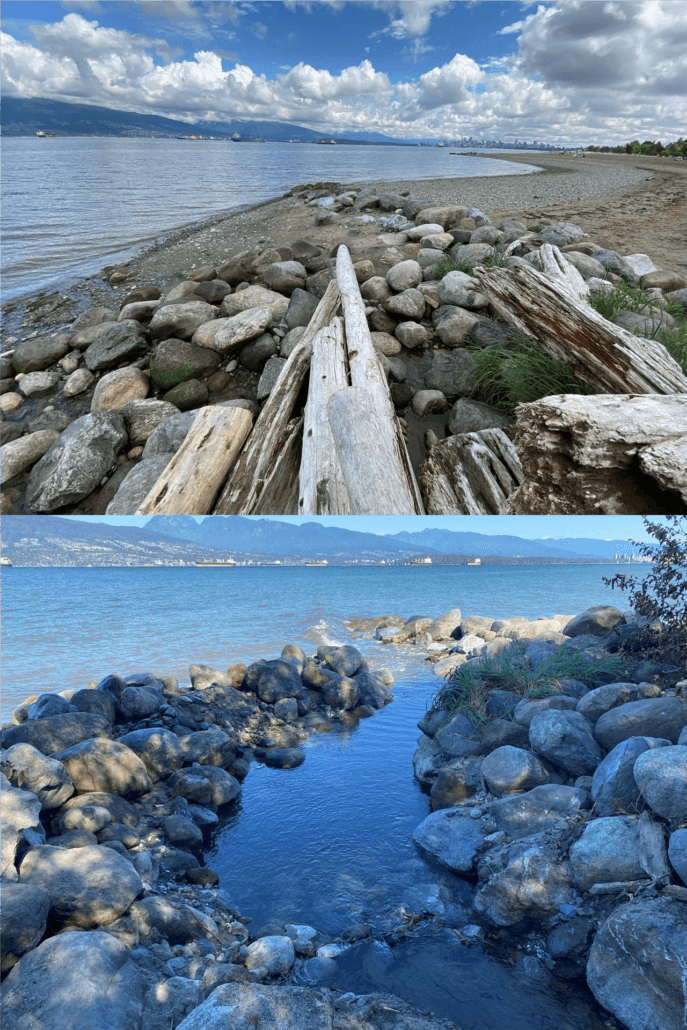
Above: Before and after the channel restoration project at Spanish Banks Creek outlet to English Bay.
For example, extensive sediment carried by peak flow in Pacific Spirit Park’s Spanish Banks Creek, one of three remaining salmon-bearing streams in the City of Vancouver, buried the creek and impeded water from flowing to English Bay and blocked salmon migration. Sediment and debris were removed from the creek during the summer of 2022.
Thanks to the repairs coupled with rain, chum have recently made it upstream to spawn. The project intends to restore the production of the area to 50,000 chum fry and 600 coho smolts.
“Many people at Vancouver Board of Parks and Recreation, Metro Vancouver, local streamkeepers and other partners collaborated to make it go ahead. All in all, it was a successful project and wouldn’t have happened without PSF’s quick response to the funding request,” says Murray Manson, fisheries protection biologist with Fisheries and Oceans Canada (DFO).
The new norm: what this means and what we can do
Due to climate change, events like the 2021 Pacific Northwest floods and this year’s drought will recur more frequently and continue to threaten endangered salmon populations.
“These time-sensitive projects related to floods can act as a catalyst for improved planning, preparation, and to advance integrated management and nature-based solutions that will ultimately be more compatible with salmon sustainability,” says Hwang.
“We need to stop treating events like these as a surprise. Instead, we need to start changing our behaviours and take measures to reduce impacts from our development activities and invest in measures that will make our watersheds more resilient and help salmon adapt to climate change.”
Together with partners, we can repair and strengthen important salmon habitat and ensure Pacific salmon recover. As these extreme weather events will likely recur, PSF will be on hand and continue to mobilize partnerships and lead efforts to mitigate the short-term effects and develop climate adaptation strategies for the long-term health of salmon.
To support vital habitat restoration and help ensure wild Pacific salmon for generations to come, please donate today.

